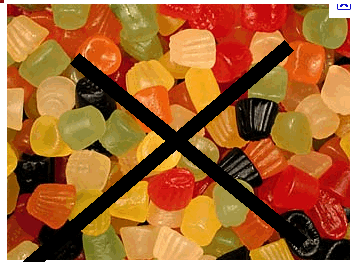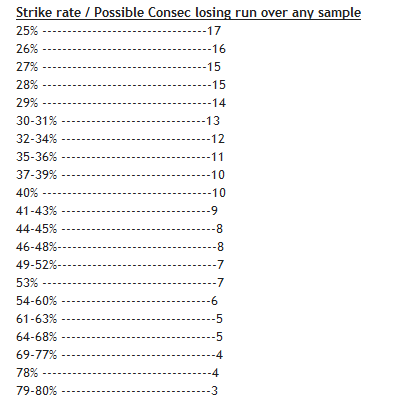bbmac
Veteren member
- Messages
- 3,584
- Likes
- 789
Hi
Not that most here would know much about what I ask, but nevertheless I enquire.
What is the frame of mind of a winning trader, what is he thinking when he puts on a trade?Is he prepared for a failed set up and failed t/a? Is he prepared ready to deal with losses? Has he got a game plan on exits , losses and profit targets? What is going on in his mind?
Is there a good book to read ?
Reading again the Op's original post, and breaking down the questions contained therein:
a. What is the frame of mind of a winning trader?
Simply put it is to follow his trading plan, to act decisively at set-ups that are designated as his trading edge and therefore form part of his trading plan and to seek to do this with impunity.
b. What is he thinking when he puts on a trade?Is he prepared for a failed set up and failed t/a?
When he puts on a trade, he should have doine so beacuse his trading edge has developed and his trading plan should kick in as regards stop and targets as well as managing the trade. He should be thinking that it is futile getting hung up on one trade as it is just a statistic in a sample of trades that occuir when his trading edge develops. He cannot know in advance which will result in a gain or loss but he is confident that over the sample a net gain will result if he follows his plan, and as such he is prepeared for a failed set-up beacuse he knows that not every one results in an individual gain. Should the trade fail he should seek to ensure that he made no mistakes in identifying his trading edge, ie that it was actually present and that the trade wasn't just a greed/fear/hope/revenge/frustration/boredom trade...if it was and he therfore followed his trading plan, he can move on to look for the next time the trading edge develops, and if it was not, then he must loearn the lesson.
c. Is he prepared ready to deal with losses?
If he follows his trading plan losses are a cost of doing business, a losing trade gets him nearer to the next winning trade. If he knows his strike rate of the trading edge/set-up that is part of his trading edge he will know the prbability of success/failure across any extended sample and he will know too the probability of a consecutive losing run and the likely length of that losing run. He will know that as long as he continues to trade only his trading edge and implimenmt his trading plan, he can deal with any individual losses. He will also know that his leverage/risk is optimised safely to the historical strike rate of his trading edge and so any individual loss (s) resulting from a trade will not be detsabilising or critical to the future implimentation of the trading edge.
d. Has he got a game plan on exits , and profit targets?
His exit and profit target are part of his trading plan and are therefore pre-determined...he knows that in the heat of a trade, emotions can run high and cloud judgement so he is best to know this before he enters the trade, as such ist is part of implimenting his trading plan.
As discussed in another post on this thread, it is the repitition of implimenting the trading plan, [until it's implimentation is consistently perfect, or as close to it as is possible to get, with perfection the goal,] that is the goal of the trader, and this is a winning mindset because it's implimentation will result in realising a net gain for his efforts. Constant analysis of mistakes and remedies to correct them toward this aim should be the objectives towards achieving the goal.
Last edited:





